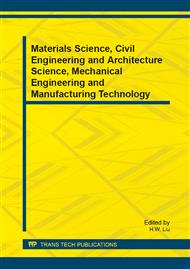p.1108
p.1112
p.1117
p.1121
p.1125
p.1130
p.1134
p.1138
p.1142
Study on the Regularity of the Center Quality of Cross Wedge Rolling Asymmetric Shaft Parts Based on Parity Wedge
Abstract:
In order to expand cross wedge rolling technology applications further and improving the quality of asymmetric shaft parts, this paper predicts the position of center defect location of Cross Wedge Rolling asymmetric shaft parts based on Parity Wedge by Normalized C & L criteria. On this basis, it conducted a systematic study on the effect of forming angle on quality of rolling core part. It has found that, during the forming process of Cross Wedge Rolling shaft parts, rolling center region was more prone to damage, and achieved the regularity of process parameters on the quality of core part. The study results lay the theoretical foundation for preventing defects effectively and improving quality of rolling core part.
Info:
Periodical:
Pages:
1125-1129
Citation:
Online since:
January 2014
Authors:
Price:
Сopyright:
© 2014 Trans Tech Publications Ltd. All Rights Reserved
Share:
Citation:


